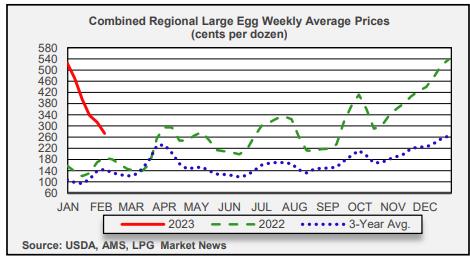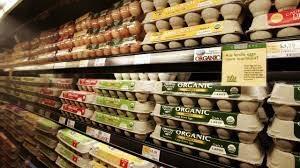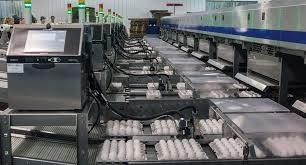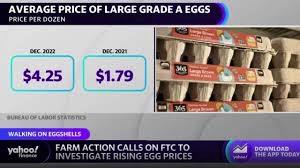 On January 19th Farm Action a self-described “Advocacy organization that works for everyone, not just a handful of powerful corporations” addressed a letter to Lina Khan, Chair of the Federal Trade Commission, accusing the egg industry of collusion to raise prices. The letter cites USDA data on egg prices and flock depopulation following highly pathogenic avian influenza (HPAI) in 2022. It is a matter of record that close to 44 million hens were depleted from February through mid-December 2022 covering 41 farms in 11 states including 22 large complexes holding from 500,000 to 6 million birds. The average size of the U.S. flock in production during 2022 was reduced by approximately 20 million hens from the pre-HPAI level of 325 million. The data presented by Farm Action is disputed since assertions are taken out of context and the accusations of collusion are vigorously rejected. In the absence of proof of either direct or indirect consultation on prices, the emotional and accusatory tone of the letter suggests a malicious bias inconsistent with fact. Reference to previous lawsuits settled during 2018 are totally irrelevant to the present situation caused by HPAI.
On January 19th Farm Action a self-described “Advocacy organization that works for everyone, not just a handful of powerful corporations” addressed a letter to Lina Khan, Chair of the Federal Trade Commission, accusing the egg industry of collusion to raise prices. The letter cites USDA data on egg prices and flock depopulation following highly pathogenic avian influenza (HPAI) in 2022. It is a matter of record that close to 44 million hens were depleted from February through mid-December 2022 covering 41 farms in 11 states including 22 large complexes holding from 500,000 to 6 million birds. The average size of the U.S. flock in production during 2022 was reduced by approximately 20 million hens from the pre-HPAI level of 325 million. The data presented by Farm Action is disputed since assertions are taken out of context and the accusations of collusion are vigorously rejected. In the absence of proof of either direct or indirect consultation on prices, the emotional and accusatory tone of the letter suggests a malicious bias inconsistent with fact. Reference to previous lawsuits settled during 2018 are totally irrelevant to the present situation caused by HPAI.
 |
 Removal of 20 million hens or 6.2 percent of the producing flock reduced supply. The price of eggs is determined by the relationship between supply and demand. Price as we learned in Econ. 101 will be influenced by the relationship of the two variables. The amplitude of the price increase was influenced by the prevailing benchmark price discovery system compiled and disseminated by a commercial firm serving both the industry but more specifically buyers for retailers. The benchmark is based on Midwest Large but also includes other sizes and regions and is intended to establish the basis of price negotiations between retail chains and producers. Admittedly, a CME quotation, based on Midwest large, would be a more equitable determinant of price compared to the current benchmark but that is only an aspirational consideration.
Removal of 20 million hens or 6.2 percent of the producing flock reduced supply. The price of eggs is determined by the relationship between supply and demand. Price as we learned in Econ. 101 will be influenced by the relationship of the two variables. The amplitude of the price increase was influenced by the prevailing benchmark price discovery system compiled and disseminated by a commercial firm serving both the industry but more specifically buyers for retailers. The benchmark is based on Midwest Large but also includes other sizes and regions and is intended to establish the basis of price negotiations between retail chains and producers. Admittedly, a CME quotation, based on Midwest large, would be a more equitable determinant of price compared to the current benchmark but that is only an aspirational consideration.
Disruption in the supply chain during 2022 was evidenced by fluctuation in and a progressive reduction of the weekly stock levels as reported by the USDA-Economic Research Service. Shell egg inventory at the beginning of January 2022 attained 2.04 million cases. In January 2023, inventory had fallen 23.2 percent to 1.56 million cases. This was mainly due to depopulation of flocks, reducing supply. Concurrently, demand increased associated with inflation in the price of alternative proteins with eggs representing an outstanding value proposition for consumers.
Retailers have traditionally used the benchmark price to negotiate wholesale prices and developed strategies to play the market by anticipating future declines or rises in the benchmark price. Fluctuation in stock levels in a rising market created uncertainty among buyers with a reluctance to lock in large purchases and to maintain adequate inventory in distribution centers and stores. In many cases, retail chains with ineffective logistics were unable to stock shelves, creating a higher demand for shell eggs that in turn fueled retail price increases.
 The Farm Action letter to the FTC claims price gouging by the largest producer in the U. S. It is a matter of record that profits generated by Cal-Maine Foods, Inc. during Fiscal 2022 attained a profit margin of 7.5 percent calculated as the net income expressed as a percentage of revenue. For the six Fiscal Years 2017 through 2022, the company recorded a profit margin of 1.9 percent due to low prevailing prices and high production costs in many years preceding the outbreak of HPAI. By selecting Fiscal 2022 as the measure of profitability, Farm Action effectively “cherry picked” a single year to establish a high profit margin for the Company. For the 17-year sequence commencing in Fiscal 2006, Cal-Maine Foods, Inc. generated a profit margin of 5.1 percent which certainly does not indicate manipulation of the egg market to their advantage.
The Farm Action letter to the FTC claims price gouging by the largest producer in the U. S. It is a matter of record that profits generated by Cal-Maine Foods, Inc. during Fiscal 2022 attained a profit margin of 7.5 percent calculated as the net income expressed as a percentage of revenue. For the six Fiscal Years 2017 through 2022, the company recorded a profit margin of 1.9 percent due to low prevailing prices and high production costs in many years preceding the outbreak of HPAI. By selecting Fiscal 2022 as the measure of profitability, Farm Action effectively “cherry picked” a single year to establish a high profit margin for the Company. For the 17-year sequence commencing in Fiscal 2006, Cal-Maine Foods, Inc. generated a profit margin of 5.1 percent which certainly does not indicate manipulation of the egg market to their advantage.
If there has been any unethical inflation of margins the FTC should look to the major retail chains. During the past week Large eggs were priced at $3.99 retail as determined by the USDA. This compares to the Midwest wholesale price of $2.65 per dozen as delivered to warehouses. The difference represents a retail margin of $1.34 per dozen or 50.5 percent above the wholesale price. Although the benchmark price has declined by at least 40 percent over seven weeks consumers have yet to benefit from the reduction borne by producers.
 The claims by Farm Action that a vast conspiracy was engineered to raise the price of eggs is without any substantiation. The extreme rise in price can be attributed to imbalance between supply and demand occasioned by depletion of a noteworthy proportion of the producing flock. This contention is supported by the recent decline in the price of eggs as demand has fallen and supply has stabilized. It is a matter of record that the average combined regional large benchmark egg price during the last week of December attained $5.40 per dozen. By the first week in February 2023, price had fallen 40.7 percent to $3.20 per dozen. The decline in price over seven consecutive weeks was accentuated by the precipitous downward movement in the benchmark price. It is self-evident that if egg producers were colluding, steps would have been taken to avoid the precipitous drop in price.
The claims by Farm Action that a vast conspiracy was engineered to raise the price of eggs is without any substantiation. The extreme rise in price can be attributed to imbalance between supply and demand occasioned by depletion of a noteworthy proportion of the producing flock. This contention is supported by the recent decline in the price of eggs as demand has fallen and supply has stabilized. It is a matter of record that the average combined regional large benchmark egg price during the last week of December attained $5.40 per dozen. By the first week in February 2023, price had fallen 40.7 percent to $3.20 per dozen. The decline in price over seven consecutive weeks was accentuated by the precipitous downward movement in the benchmark price. It is self-evident that if egg producers were colluding, steps would have been taken to avoid the precipitous drop in price.
Despite the unsubstantiated accusations of Farm Action, the price of eggs over the period January 2022 to through February 2023 was the result of a disequilibrium in supply and demand with the amplitude of price fluctuations accentuated by the benchmark pricing system. If Farm Action claims collusion, then they are obliged to present evidence. Most certainly their letter to the FTC was more for the consumption of the membership of their organization than to convince Federal regulators. The U.S. egg industry should welcome a review of egg prices. If conducted in a responsible manner by competent agricultural economists, the fallacies in the assertions made by Farm Action will become evident.